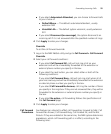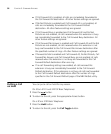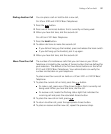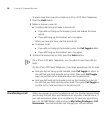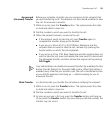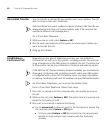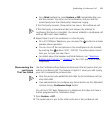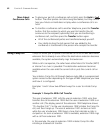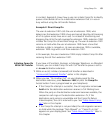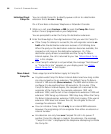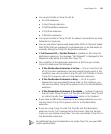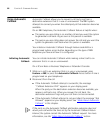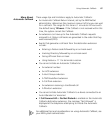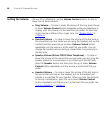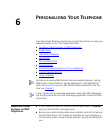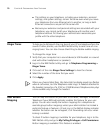
Using Camp On 63
In contrast, Example 2 shows how a user can initiate Camp On to directly
queue a transferred call on to a destination extension that is in use or
busy without using the call transfer feature.
Example 2: Direct Camp On
The user at extension 1001 calls the user at extension 1004, who
determines that extension 1005 is busy and cannot take the call (meaning
all of its system access lines are in use). So instead of transferring and
dropping the call to the call coverage for extension 1005, extension 1004
initiates the Camp On call and then hangs up. The user at extension 1001
remains on hold while the user at extension 1005 hears a tone that
indicates a caller is camped on. As soon as extension 1005 is available,
extension 1005 rings with a call from extension 1001.
In this example, the user at extension 1004 simply initiates Camp On after
receiving the call from extension 1001.
Initiating Camp On
With Call Transfer
If you have a 3Com Basic, Business, or Manager Telephone, or Attendant
Console, you can initiate Camp On with Call Transfer to queue a call to
an in use destination extension.
1 While on a call, initiate a (screened) call transfer as described in
“Announced (Screened) Transfer” earlier in this chapter.
2 When you see “On Another Call” on your display panel for the
destination extension, press Feature + 468 (or press the Camp On
Access button if one is programmed on your telephone).
■ If the Camp On attempt is successful, the call originator remains on
hold while the destination extension receives a Call Waiting tone.
When the party on the destination extension becomes available, the
camped on call rings on the destination extension. Or, if the
destination party remains unavailable and the Camp On Return
Interval expires, the call is returned to you. See
“More About Camp
On” later in this chapter.
■ If the Camp On attempt is not permitted, the call originator remains
on hold while the message “Not Allowed” or “Camp On In Use”
appears on your display panel. See
“More About Camp On” later in
this chapter.



